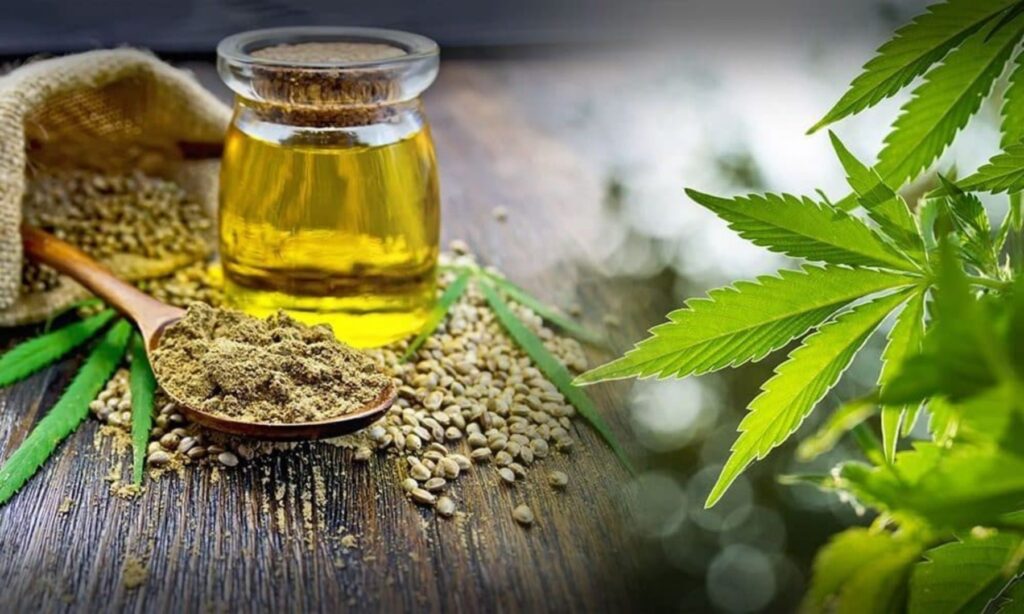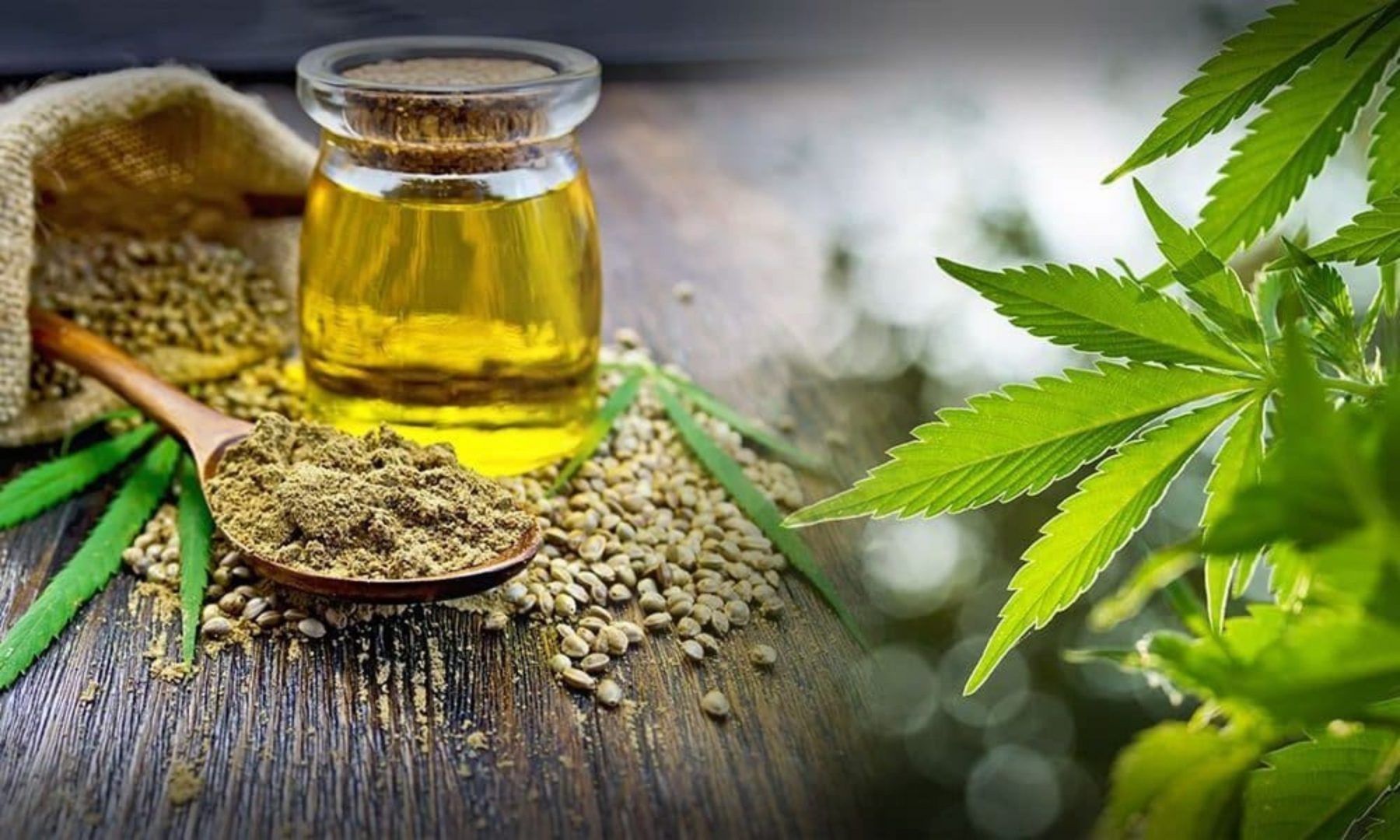
Most CBD enthusiasts love what CBD oil does for their health, but cannot stand the taste. Many CBD oils have a characteristic earthy, grassy flavor.
Not all CBD users like the taste, and some even resort to using CBD in other forms, like gummies, pills, and topical treatments. However, CBD in the form of oils comes with versatility, and many people want to continue using it despite its taste.
What does CBD oil taste like to different people, and does it vary? We’ll explore whether all CBD oils taste the same and how you can hack their flavors to make them more palatable.
What Is CBD?
Cannabidiol, or CBD, is a healing extract that comes from the hemp plant. People use it in various medicinal, nutritional, and wellness products for its positive health effects ranging from calming supplements to seizure treatments.
CBD is not the same as medical marijuana. CBD extracts should contain only less than 0.3% of tetrahydrocannabinol (THC), the psychoactive component of cannabis. CBD and THC make up only two of at least 113 cannabinoids present in cannabis plants.
What Does CBD Oil Taste Like?
Not all CBD oils taste the same. While most taste earthy and grassy, several factors can impact the taste.
Some CBD oils will leave you reaching for the mouthwash. However, others have a more pleasant flavor, which many people enjoy.
The difference lies with the product formulation, the quality of the plant, and the ingredients combined with the CBD extract. The following factors also influence the flavor of CBD.
The Extraction Method
Crude, or pure and unfiltered, CBD tastes leafier than other kinds. This flavor profile comes from the natural terpenes, flavonoids, and other cannabinoids present in the hemp plant. Unfortunately, not many users want this flavor in their CBD oil.
These unprocessed oils also contain chlorophyll, waxes, and other compounds that lower their appeal to your taste buds. Users sometimes call them “black” oils for their dark green or brown appearance, uneven consistency, and strong taste.
Filtered CBD oils come blended with a carrier oil and other ingredients that have a different flavor profile and do not exhibit the characteristically robust taste of pure CBD extract. They also appear more golden due to the filtering process that removes impurities.
This filtered CBD extract goes through a series of fine screens that eliminate most of the plant’s terpenes, flavonoids, chlorophyll, waxes, and other plant matter, improving their consistency. This process makes a refined, dense, and less intense CBD oil. It also makes the supplement suitable for beginner users who have not yet acclimated to the natural taste of pure CBD oil.
Full Spectrum CBD Oil vs. Crude CBD Oil
Full-spectrum CBD oil has a more natural hemp taste compared to CBD isolate because these oils contain more than one isolated cannabinoid.
Still, high-end full-spectrum CBD oils should not contain significant plant matter like chlorophyll and waxes like what you find in crude CBD. Instead, they should feature only the essential chemical constituents like terpenes and flavonoids.
Full-spectrum extracts are typically well-filtered and mixed with carrier oils, both of which influence the final product’s taste.
The Carrier Oil Base and Liposomal Oils
Manufacturers typically blend CBD extracts with carrier oils like olive oil, hemp seed oil, avocado oil, coconut oil, MCT oil, or liposomes to create the final product.
CBD oils that use hemp seed oil as their carrier oil taste nuttier than others, much like sunflower seeds or walnuts. This flavor profile makes hemp seed oil a popular cooking and baking ingredient.
CBD oils that use an olive oil base taste more like cooking oils. They feature smooth, nutty, and grassy tones with a more developed, well-rounded flavor.
CBD extracts that contain liposomes or liposomal oils have microscopic lipid bubbles that encase the CBD extract. These lipid bubbles protect the CBD from your stomach acid and powerful digestive enzymes to ensure bioavailability.
This type of CBD oil may taste different depending on the extraction method and ingredients. Although liposomes themselves don’t have a strong flavor, some liposomal oils contain vitamin C extracts, which significantly changes the final product’s taste.
Flavoring Oils and “Blocking” Substances
Some manufacturers may also add flavoring oils such as peppermint, cinnamon, and citrus to mask the taste of pure CBD.
They may also use solutions that alter the taste of pure CBD extract. These chemicals work by blocking specific taste receptors in the mouth to make the natural taste of CBD undetectable.
Unfortunately, many of these blocking compounds use artificial components, which may not suit users that want to buy all-natural or organic CBD supplements. Manufacturers have taken note of this issue, and many have switched to natural masking ingredients such as grapefruit, dark chocolate, and coffee.
Can You Use CBD Isolate?
You can add CBD isolates to foods and liquids without altering their taste. Most of these supplements do not have any distinct flavor, so you likely won’t notice them.
When used with vape pens, CBD isolate is tasteless, although some people have reported tasting a hint of cherry flavor. You can also combine CBD isolate with several oil bases such as coconut and MCT oil, enhancing the flavor for sublingual consumption.
While using CBD isolate takes care of the unpleasant taste problem, it does have its downsides compared to using full-spectrum CBD.
CBD isolate comes with the downside of the bell-shaped response curve. Purified CBD may be effective, but that effectiveness peaks at a medium dose.
It then falls short for higher and lower doses, creating the characteristic bell graph on a chart, indicating that you’ll only get the best effects when you use it in a specific dosage. This phenomenon means that purified CBD has limited efficacy, and it can be challenging to pinpoint the ideal dose.
When CBD extracts contain a broad- or full-spectrum of cannabinoids, terpenes, and phenolics, users require lower doses to feel the product’s effectiveness, and the bell-shaped curve observed in CBD isolate use disappears.
Thus, although CBD isolates may solve users’ unpleasant taste problems, they may not be as effective at treating or relieving the user’s conditions as full-spectrum or broad-spectrum CBD.
What Should My CBD Oil Taste Like?
CBD oil should taste pure and fresh, even if you don’t like the taste. If you notice an “off” taste in your CBD oil, stop using it immediately.
A general rule of thumb is that CBD oil should have an earthy flavor with hints of nuttiness. If it uses hemp oil as a carrier base, it should taste like hemp seeds or hemp seed oil.
Some tastes you should not find in your CBD oil include:
- Artificial flavorings – You can use natural flavors in CBD oil, but do not buy CBD oils from manufacturers who opt for toxic artificial flavoring agents.
- Artificial sweeteners – Some CBD tinctures may contain sweeteners to mask the taste of hemp. However, consuming CBD oil that contains sugar and other sweeteners can harm you, especially if you have diabetes. Instead, use CBD oils that contain natural flavor enhancers like peppermint oil.
- Contaminants – If your CBD oil tastes funny, it might contain an impurity that made it through the manufacturing process. Ensure that the company you buy your oil from has provided all the details of its third-party lab testing and quality assurance processes.
- Dyes – Needless to say, food dyes, natural or not, have no place in CBD oil. Steer clear of any CBD oils containing them.
Can You Make CBD Oil More Palatable?
There are several ways to enhance your CBD oil at home to mask that leafy taste in your mouth, making your CBD oil more appetizing. Try these tips to improve your CBD experience and reap the benefits without the aftertaste.
- Brush your teeth immediately after using CBD oil to remove that earthy taste from your mouth and protect your teeth from potential long-term staining.
- Chew a mint as you take the CBD oil or right after to replace some of the oil’s natural taste.
- Keep a glass of water handy as you take your CBD oil to wash the taste away after sublingual absorption. You could also opt for a more flavorful drink like orange juice, tea, or coffee.
- If you still can’t stand the taste of CBD oil, opt for convenient supplements like capsules, pills, tinctures, topical treatments, and CBD isolates. These mostly odorless and flavorless CBD products deliver precise doses of CBD oil that you don’t have to measure. You simply use the supplements topically or sublingually and get on with your day.
- You can also swallow CBD oil instead of using it under your tongue. Add CBD oil to your morning protein shake, smoothie, or juice to eliminate the taste and make it easier to ingest. You could also add a few drops of your oil to tea, coffee, yogurt, or milk, or blend it into your meal preparations as herbaceous sauces and salad dressings.
You can find even more ways to improve the taste of your CBD oil, so get creative with flavors you already love.
